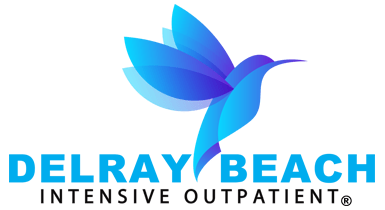After leaving a residential drug treatment center or a medical drug detox facility, you may be ready for more freedom than these restrictive options provide but not yet ready to be fully on your own in your addiction recovery with all the temptations that full independence may bring. This situation is where a transitional living arrangement like a sober living residence or a halfway house might come in.
A transitional living option like a sober living residence or halfway house may also be recommended as part of your intensive outpatient treatment plan. Both of these living options can offer you support, structure, accountability, and community as you lay the foundation for your lasting recovery and eventual return to a productive life in the “real world.”
Along with requiring residents to maintain an entirely drug and alcohol free environment and an overall sober lifestyle, these transitional living programs also customarily implement procedures like random drug tests, nightly curfews, and mandated twelve step meetings and sponsorship placements to help keep former addicts who are in early recovery safe, clean, and on track to maintain their new healthy habits for life.
But there are also some important differences between these two handy-dandy transitional living arrangements. Keep reading to learn more about halfway houses, sober living homes, and how they may be able to help you or a loved one in achieving your (or their) long term recovery goals.
What Is A Halfway House?
Halfway houses are so named because they are a supposed “halfway” point between independent living and the fully supervised and constrained existence one might experience while undergoing drug rehab at a residential treatment facility or while they are incarcerated. Halfway houses seem to have originated in 18th century England as housing for child criminals, but were eventually adopted by countries like the US as an efficient and structured form of housing for other types of criminals who had been recently released from prison.
Nowadays, they are often used as housing for criminals convicted of drug related offenses as they undergo court-mandated treatment, with a mandatory stay in a halfway house sometimes being part of that compulsory regime.
Halfway houses are also sometimes used as transitional housing options for people who had previously been experiencing homelessness. These institutions are often state-sponsored or run by government agencies, meaning that they have limited budgets, and thus can often offer only crowded and dorm-like accommodations.
However, more upscale non-state affiliated halfway houses also exist, though such facilities may blur the line between halfway house and sober living. These programs may cater to patients undergoing voluntary rather than court ordered addiction treatment, but still usually require residents to be enrolled in a treatment program during their stay, or to have recently completed one. Halfway houses will also often provide a time limit on how long recovering addicts can remain residents of their transitional living program.
What Is A Sober Living Residence?
In contrast to halfway houses, sober living residences tend to be structured more like private homes than like dormitories, and to provide generally more comfortable accommodations—for instance, sober living homes tend to be far smaller and less crowded.
A sober living residence is also less likely to be state affiliated than a halfway house, and may or may not be instead associated with a specific treatment program. If residents are not required to be in active addiction treatment, they may be required to have a job or enrolled in an education or community service program to ensure that they are on track to be able to rejoin the work force as part of the groundwork that they are laying for their sustainable sober lifestyle.
This is the case for the sober living residences that Delray Beach Intensive Outpatient offers patients the chance to choose as their accommodations while they are a part of our comprehensive treatment program. Located at a convenient distance from our Delray Beach treatment center, these residences emphasize creating a sense of community, camaraderie, and stability as well as hold residents to strict guidelines designed to facilitate their recovery. We are proud to say that the empathetic environment and collaborative care our sober living residences provide have helped many of our patients to achieve success in recovery.
How Should You Decide Whether To Stay In A Halfway House Or A Sober Living Facility?
Either a sober living residence or a halfway house could serve an important place in your recovery journey. If you are facing economic constraints, a halfway house may be a more affordable way for you to ensure the structure, accountability and routine that you need while you are moving through your recovery process.
However, if you are in a position to prioritize holistic wellness and comfortable surroundings, then a sober living residence may be more in line with your recovery wants and needs. The lack of a strict time limit on stays in sober living residences will also give you the benefit of being able to give your full attention to your work in early recovery without worrying or wondering about your next move after the clock runs out.
For more information about our intensive outpatient program, our sober living residences, and how our cutting edge treatment program can help you break free from your addiction and set the stage for your long term sobriety, contact Delray Beach Intensive Outpatient today at (561) 678-0618.
